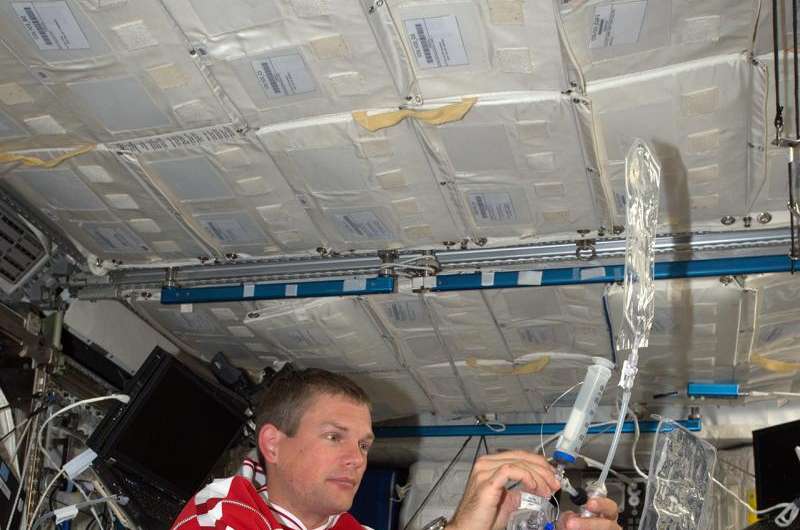ESA image: Andreas in space

ESA astronaut Andreas Mogensen's 10-day 'iriss' mission to the International Space Station includes many technology demonstrations and scientific experiments. His first scientific task on arriving at the weightless research laboratory was to purify some of the Station's waste water and test a 'biomimetic' membrane from Denmark. The membrane mimics nature to create clean drinking water using a nano-technology that requires no energy. Throughout the day, Andreas returned to the experiment to flush and change the purified water to gather as many samples as possible.
Water naturally passes through the nano-sized protein tubes but an electrostatic charge stops ions, including salt, from passing. The result is a continuous flow of water from one side to the other of the membrane. As the process works at the molecular scale, the membrane hardly clogs up and can be used for longer than regular filters.
Current water recycling on the International Space Station uses filters that weigh up to 150 kg each and need to be replaced regularly, so this new technology could be a smaller, lighter and less energy-hungry alternative. The output will now be analysed to see if it can be used in space in the future.
Follow the whole mission with live updates via the iriss mission blog and Twitter via @esaoperations
Connect with Andreas at: andreasmogensen.esa.int/
Provided by European Space Agency




















